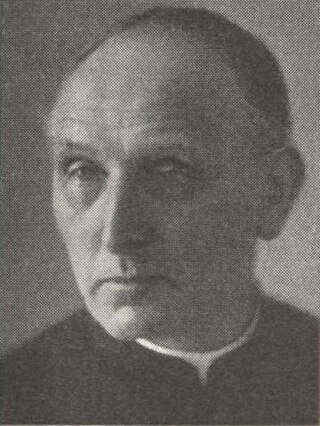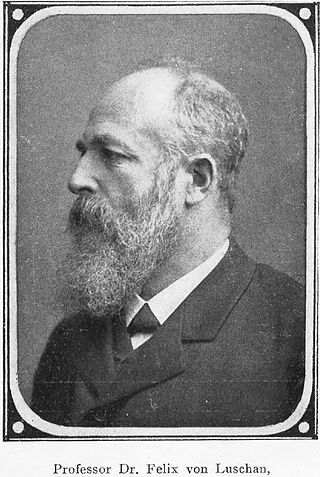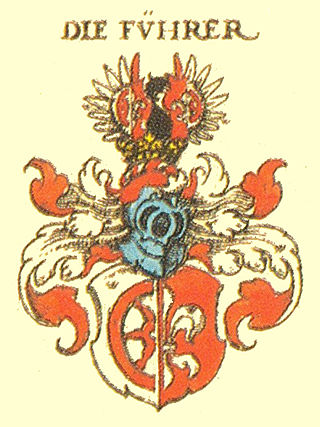Related Research Articles

Baron Carl von Rokitansky was an Austrian physician, pathologist, humanist philosopher and liberal politician, founder of the Viennese School of Medicine of the 19th century. He was the founder of science-based diagnostics.

Wilhelm Schmidt SVD was a German-Austrian Catholic priest, linguist and ethnologist. He presided over the Fourth International Congress of Anthropological and Ethnological Sciences that was held at Vienna in 1952.

Felix Ritter von Luschan was a medical doctor, anthropologist, explorer, archaeologist and ethnographer born in the Austrian Empire.

Gustav Heine, after 1870 Gustav Freiherr Heine von Geldern, was a German-Austrian journalist and press publisher.

Egon Freiherr von Eickstedt was a German physical anthropologist who classified humanity into races. His study in the classification of human races made him one of the leading racial theorists of Nazi Germany.

Christian Feest is an Austrian ethnologist and ethnohistorian.

The Weltmuseum Wien in Vienna is the largest anthropological museum in Austria, established in 1876. It is housed in a wing of the Hofburg Imperial Palace and holds a collection of more than 400,000 ethnographical and archaeological objects from Asia, Africa, Oceania, and America.
René de Nebesky-Wojkowitz was a Czech ethnologist and Tibetologist. He is mostly known for his 1956 publication Oracles and Demons of Tibet, which was the first detailed study of Tibetan deity cults.
Moritz Freiherr von Leonhardi was a German anthropologist.
Heinrich Philipp von Siebold was a German antiquary, collector and translator in the service of the Austrian Embassy in Tokyo.
Hugo Adolf Bernatzik was an Austrian anthropologist and photographer. Bernatzik was the founder of the concept of alternative anthropology.

Christoph von Fürer-Haimendorf or Christopher von Fürer-Haimendorf FRAI was an Austrian ethnologist and professor at the School of Oriental and African Studies at London. He spent forty years studying tribal cultures in Northeast India, in the central region of what is now the state of Telangana and in Nepal. He was married to British ethnologist of India and Nepal, Betty Barnardo.
Hermann von Wissmann was a German-Austrian explorer of Arabia.
Robert Bleichsteiner was an Austrian ethnologist.
Richard Arthur Hans Kummerlöwe, with the spelling changed to Kumerloeve from 1948 was a German ornithologist who served as an SS Officer during the Second World War. He initially worked as a zoological curator at the Dresden Museum but during the Third Reich he held numerous positions including charge of the Vienna museum after the German annexation of Austria in March 1938. He was involved in the "Nazification" of German and Austrian museums, making them tools for explaining theories of race and genetic purity.
Helmut Petri was a German anthropologist.

Schlosstheater Schönbrunn is a stage at Schönbrunn Palace in Vienna which opened in 1747. The Baroque theatre now serves for the training of students of acting and opera of the University of Music and Performing Arts Vienna (MDW), and for performances of the Musik Theater Schönbrunn.
Andre Gingrich is an Austrian ethnologist and anthropologist, member of the Austrian Academy of Sciences, director of the Institute for Social Anthropology of the Austrian Academy of Sciences, and retired professor at the University of Vienna.
Wilhelm Emil Mühlmann was a German ethnologist who served as Professor of Ethnology at the University of Mainz and Chair of Ethnology at the University of Heidelberg.
Marianne Schmidl was the first woman to graduate with a doctorate in ethnology from the University of Vienna. An Austrian ethnologist, teacher, librarian and art collector, Schmidl was plundered and murdered in the Holocaust by the Nazis because of her Jewish origins.
References
- Gérald Gaillard, The Routledge Dictionary of Anthropologists, translated by Peter James Bowman and James Bowman, Routledge, 2004, p. 223. ISBN 0-415-22825-5.
- Vinigi L. Grottanelli, "Robert Heine-Geldern's Contribution to Historical Ethnology", Current Anthropology, Vol. 10, No. 4 (Oct., 1969), pp. 374–376.
- Claire Holt, "In Memoriam: Robert Heine-Geldern", Indonesia 6 (October 1968), 188-192.
- Verena Neller: Robert Heine-Gelderns Exilzeit in den USA 1938–1949 in: Andre Gingrich; Peter Rohrbacher (Hg.), Völkerkunde zur NS-Zeit aus Wien (1938–1945): Institutionen, Biographien und Praktiken in Netzwerken (Phil.-hist. Kl., Sitzungsberichte 913; Veröffentlichungen zur Sozialanthropologie 27/3). Wien: Verlag der ÖAW 2021, S. 1529–1652. doi:10.1553/978OEAW86700